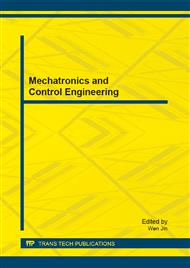[1]
K. Kasuma, N. Noda and M. Suzuki: Phytochemistry Vol. 64 (2003), p.1133.
Google Scholar
[2]
A.Castañeda-Ovando, M. de L. Pacheco-Hernández, M. E. Páez-Hernández, J. A. Rodríguez and C.A. Galán-Vidal: Food Chem. Vol.113 (2009), p.859.
DOI: 10.1016/j.foodchem.2008.09.001
Google Scholar
[3]
P.K. Mukherjee, V. Kumar, N.S. Kumar and M. Heinrich: J. Ethnopharmacol. Vol.120 (2008), p.291.
Google Scholar
[4]
I. Serraino, L. Dugo, P. Dugo, L. Mondello, E. Mazzon, G. Dugo, A.P. Caputi and S. Cuzzocrea: Life Sci. Vol. 73 (2003), p.1097.
DOI: 10.1016/s0024-3205(03)00356-4
Google Scholar
[5]
N. Kamkaen and J.M. Wilkinson: Phytother. Res. Vol. 23 (2009), p.1624.
Google Scholar
[6]
X. Zhao, C. Zhang, C. Guigas, Y. Ma, M. Corrales, B. Tauscher and X. Hu: Eur. Food Res. Technol. Vol.228 (2009), pp.759-765.
DOI: 10.1007/s00217-008-0987-7
Google Scholar
[7]
A.H. Janssen, I. Schmidt, C.J.H. Jacobsen, A.J. Koster and K.P. de Jong: Micropor. Mesopor. Mat. Vol. 65 (2003), p.59.
Google Scholar
[8]
H.S. Cho and R. Ryoo: Micropor. Mesopor. Mat. Vol. 151 (2012), p.107.
Google Scholar
[9]
R. Ryoo, S.H. Joo and S. Jun: J. Phy. Chem. B. Vol. 103(37) (1999), p.7743.
Google Scholar
[10]
D.C. Thom, J.E. Davies, J.P. Santerre and S. Friedman: Oral Surg. Oral Med. Pathol. Oral Radiol. Endod. Vol. 95(1) (2001), p.101.
Google Scholar
[11]
Y. Abe, M. Ueshige, M. Takeuchi, M. Ishii and Y. Akagawa: Int. J. Prosthodont. Vol. 16(2) (2003), pp.141-144.
Google Scholar
[12]
S. Srirak, S. Porasuphatana, T. Damrongrungruang and A. Priprem: Thai J. Toxicology Vol. 25(1) (2010), p.39.
Google Scholar
[13]
J.H. Fentem and B.A. Botham: Altern. Lab. Anim. Vol. 30(Suppl 2) (2002), p.61.
Google Scholar
[14]
M. Ponnec: Int. J. Cosmetic Sci. Vol. 14 (1992), p.245.
Google Scholar
[15]
Xing, J.Z., Zhu, L., Gabos, S. and Xie, L: Toxicol. in Vitro. Vol. 20 (2006), p.995.
Google Scholar
[16]
Urcan, E., Haertela, U., Stylloua, M., Hickel, R., Scherthanc, H. and Reichla, F.X. Dent. Mater. Vol. 26 (2009), p.51.
Google Scholar
[17]
Y.A. Abassi, B.Xi, W. Zhang, P. Ye, S.L. Kirstein, M.R. Gaylord, S.C. Feinstein, X.Wang and X. Xu: Chem. Biol. Vol. 16(7) (2009), p.712.
Google Scholar


